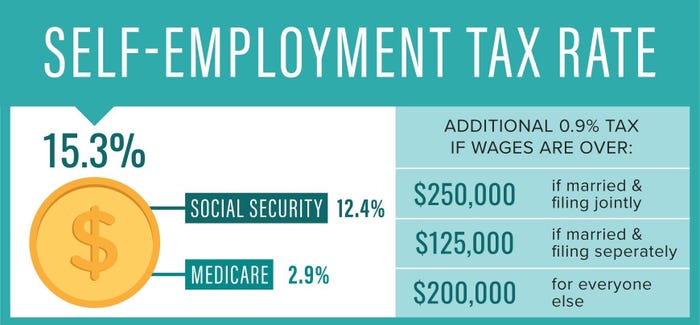
We return today to helping Gary, 85, figure out how to slow down and retire from farming. As discussed last week, his challenge is largely due to income and self-employment taxes limiting his ability to do so.
Self-employment taxes
Gary has been maxing out his self-employment contributions, which most would argue is not really tax efficient at this point in his farming career. Typically, this tax is split between employers and employees to help fund the Social Security and Medicare programs. However, self-employed individuals bear this entire burden.
I won’t go into all the details of how this calculation works but for perspective, Gary’s SE tax contributions were near $25,000 last year.

Who pays SE tax?
Self-employment taxes apply to earned income from individuals, sole proprietors, members of a partnership, and members of a disregarded entity, such as a limited liability corporation (a one-member LLC that pays taxes as an individual). Passive income is not subject to SE tax, such as earnings from investments, retirement accounts or leasing your farm to a farm tenant on a cash rent or crop-share basis. This is where Gary would like to transition.
How to manage SE tax?
Historically, sole proprietors like Gary have managed income from their operations by pre-paying farm expenses, trading farm machinery, or making improvements to the farm. This has come more to the limelight since Gary decided to stop purchasing new equipment.
Other farmers have chosen to farm under a corporate structure such as a C-Corp, S-Corp, or LLC (taxed as an S-Corp). Corporations are exempt from SE tax, but as a member of a corporation you may pay SE tax on the salary you are paid. By separating the income earned by the corporation, you avoid SE tax on funds paid to you as a distribution.
Self-rental deductions
As I learned more about Gary we identified another overlooked planning tool. This involves him restructuring the ownership of his farm real estate to a family land entity. In Gary’s case, this will better complement his long-term wishes to see their multigenerational farm stay in his family as it passes to his three children and, eventually, seven grandchildren.
One type of ownership structure is a limited liability company, which you could say will formalize what would have been an informal partnership between his kids one day anyway.
A side benefit is this can position Gary to take self-rental deductions, which most tax practitioners recognize for farmers. In other words, shift income from his active schedule F (subject to SE tax) over to the family land rental entity which is considered passive income (not subject to SE tax).
.png?width=700&auto=webp&quality=80&disable=upscale)
I am not a certified tax professional, but there are well-respected farm CPA’s who have written about the self-rental section of the IRS Code which contains some complex rules around reporting income and losses. A key tax court case in the 8th Circuit in 2017 supported that a properly structured farm lease between a farm entity and a farmer who owns the farmland should not be subject to self-employment tax.
Most advisors I’ve worked with would suggest this farm lease should be at or below market level rents and have no material participation by the landlord. However, it is likely not as easy as Gary establishing a single-member LLC. Rather, it is typically advised he transfer a portion of his LLC membership units to his children now, so it becomes a legitimate multi-member land-owning business.
Land-owning entity
In summary, Gary had multiple considerations for creating a family land entity. As I’ve been quoted in saying, more farmers deal with the challenges of income or self-employment taxes than they do estate taxes (under current laws). It just so happens this strategy will help Gary manage all of these.
Short term, the self-rental deduction will help him manage self-employment taxes as long as he continues to actively farm. It also positions him to take valuation discounts the IRS recognizes for assets held in closely held family entities. This is an effective strategy to shrink the value of your estate (on paper), if needed, for estate tax purposes.
Longer term, this is an opportunity to get the kids more involved now while deflecting some of the income Gary is subject to as a single taxpayer. The LLC also better complements his long-term goals for keeping the farm in the family. As Gary says: “this is like a gift that keeps on giving.”
This is part five in a series. Read the other articles here:
Downey has been helping farmers and landowners for the last 23 years with their family farm transition, estate planning, leasing strategies, and general farm advising. He is the co-owner of Next Gen Ag Advocates and an associate of Farm Financial Strategies. Reach Mike at [email protected].
Read more about:
TaxesAbout the Author(s)
You May Also Like






